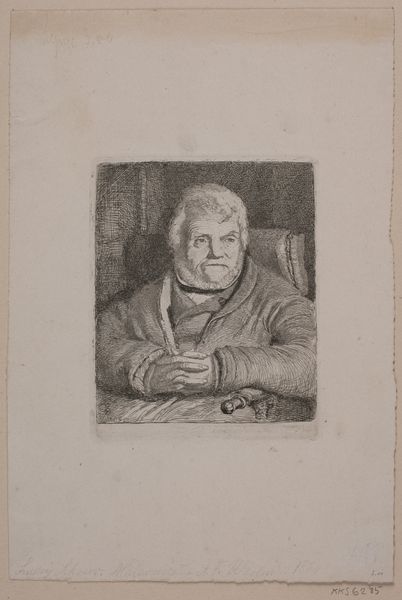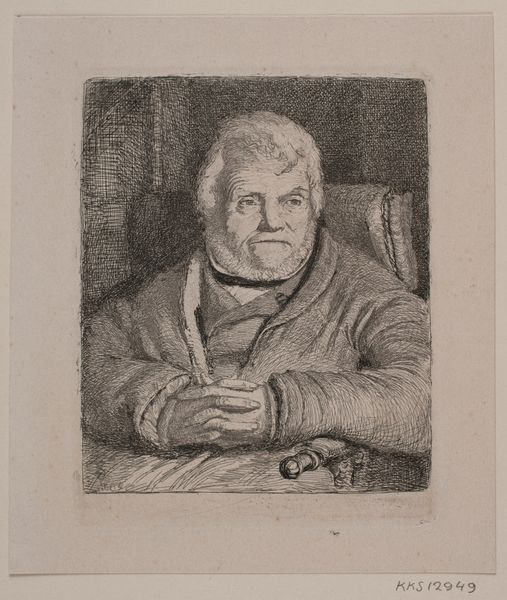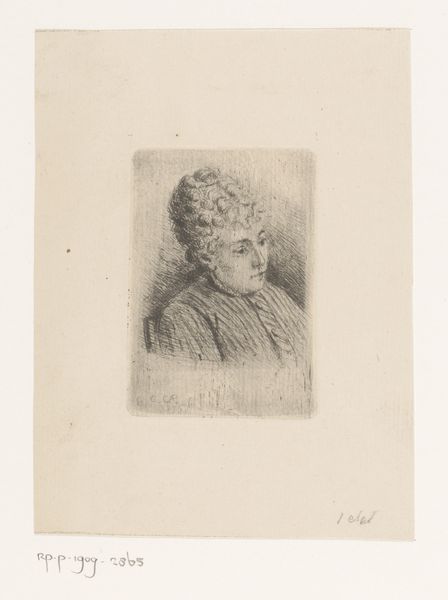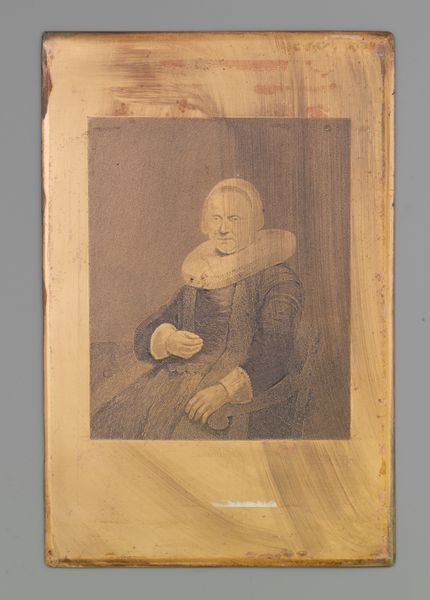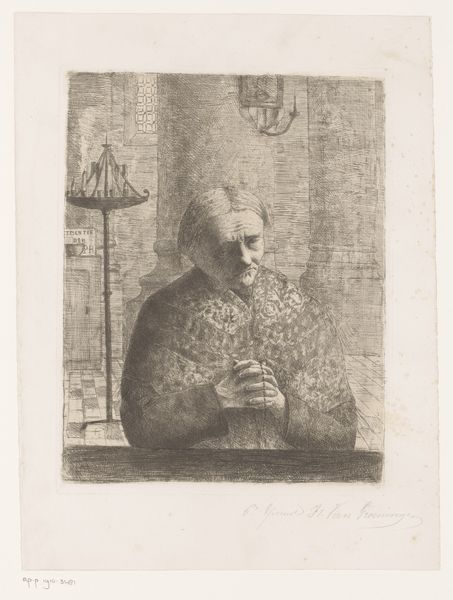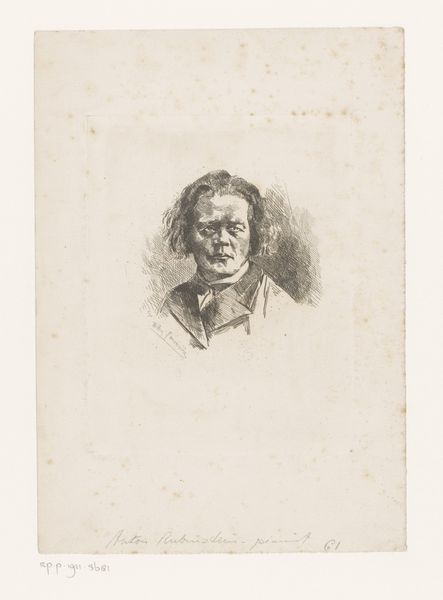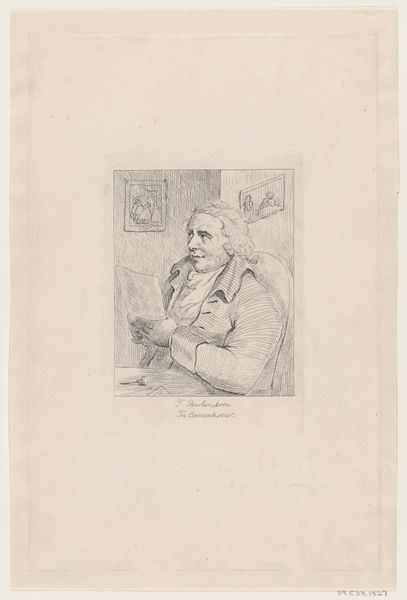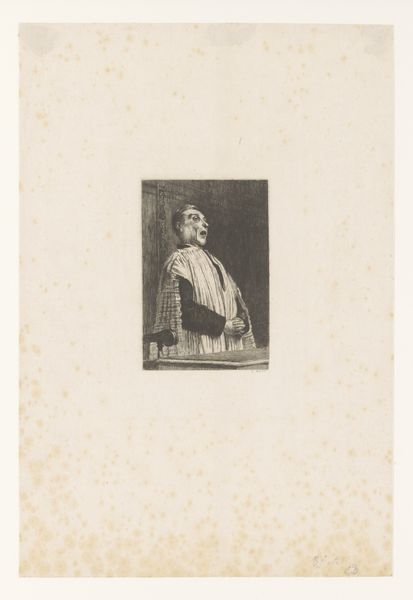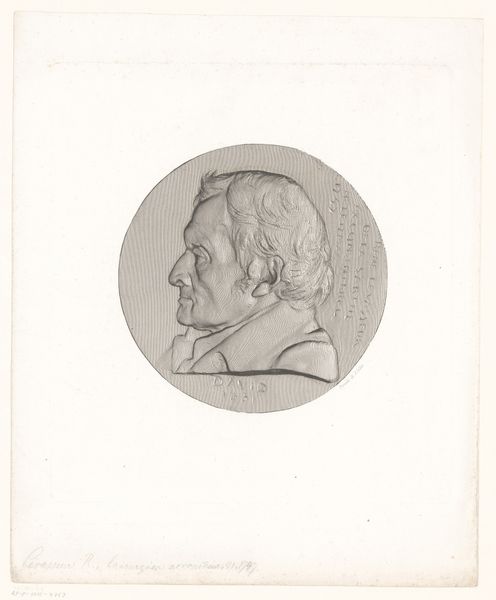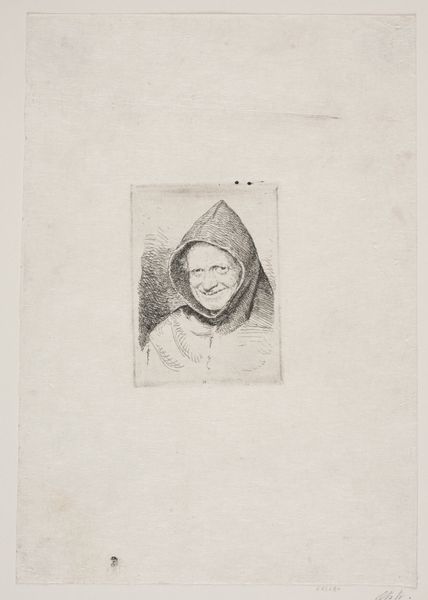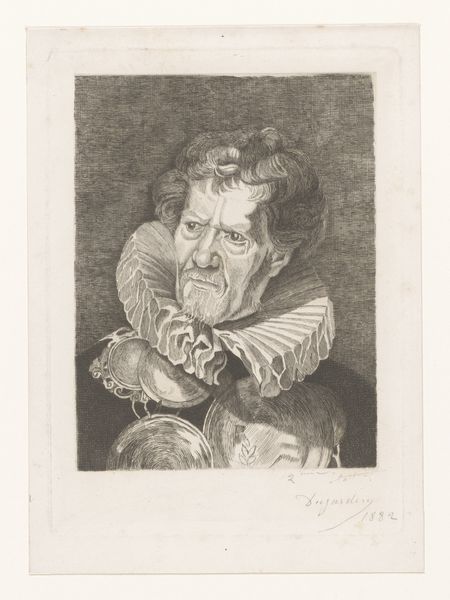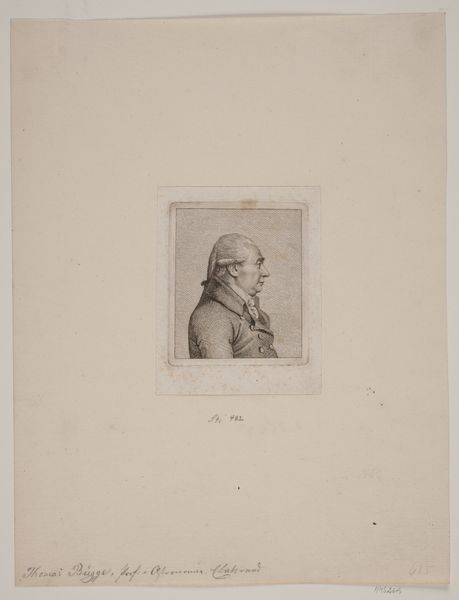
drawing, print, etching
#
portrait
#
drawing
# print
#
etching
#
genre-painting
#
realism
Dimensions: 130 mm (height) x 105 mm (width) (plademaal)
Editor: This is L.A. Schou’s “Malermester Werliin,” from 1864. It's an etching, and something about the starkness of the print and the direct gaze of the subject is quite compelling. What stands out to you? Curator: I am drawn to the process of etching itself. Think of the labor involved – the careful application of acid, the precise timing to achieve the desired depth of line. What does it say about valuing labor when an artist uses a process often associated with mass reproduction for a portrait, typically the domain of painting? Editor: That's a great point! It challenges the usual hierarchy, doesn’t it? So, why use this technique? Was Schou making a statement about class, or access to art? Curator: Possibly both. Etching allows for multiples. Was Schou aiming to make art more accessible? And the choice of subject: a master painter, but one firmly rooted in a trade, in manual labor. It suggests a deliberate engagement with the burgeoning middle class and the shifting landscape of artistic patronage. Note how the tools of Werliin's trade seem subtly present. What do those convey, would you say? Editor: I see the pipe… it suggests relaxation but also perhaps that he is a working man taking a break? It makes me wonder what other items would tell a story. Curator: Exactly! And what about the choices available to artists working during a period of increasing industrialization? What materials did they embrace or reject? Consider also the audience Schou hoped to reach with this etching, and the kind of consumption he was hoping to encourage. Editor: So, by focusing on the “how” and “why” of its creation, we can uncover social and economic commentary. It shifts how I will be approaching the next artwork I will analyze. Curator: Precisely. It encourages us to move beyond just aesthetic appreciation to consider the material conditions that shape artmaking.
Comments
No comments
Be the first to comment and join the conversation on the ultimate creative platform.
